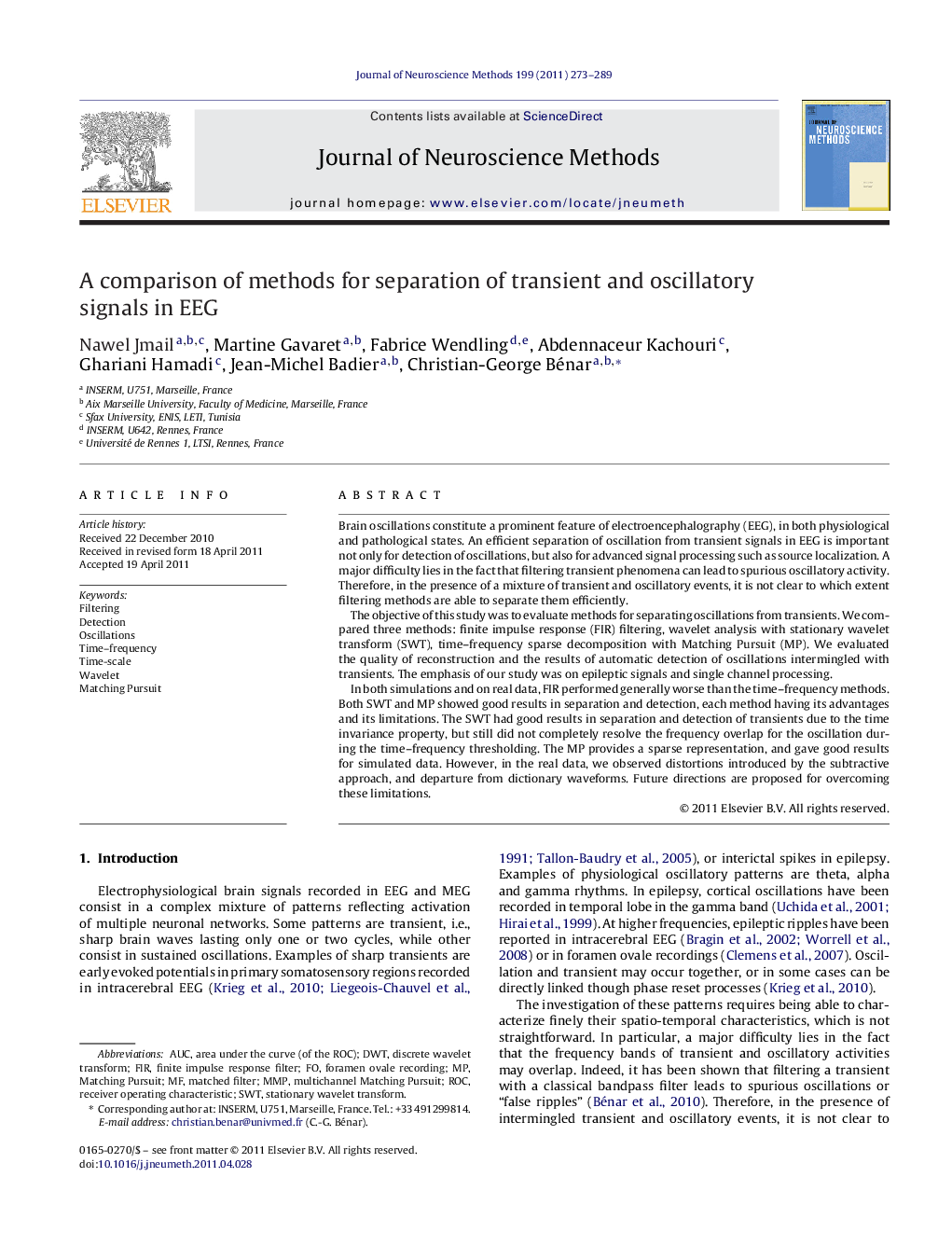| کد مقاله | کد نشریه | سال انتشار | مقاله انگلیسی | نسخه تمام متن |
|---|---|---|---|---|
| 6269651 | 1295149 | 2011 | 17 صفحه PDF | دانلود رایگان |

Brain oscillations constitute a prominent feature of electroencephalography (EEG), in both physiological and pathological states. An efficient separation of oscillation from transient signals in EEG is important not only for detection of oscillations, but also for advanced signal processing such as source localization. A major difficulty lies in the fact that filtering transient phenomena can lead to spurious oscillatory activity. Therefore, in the presence of a mixture of transient and oscillatory events, it is not clear to which extent filtering methods are able to separate them efficiently.The objective of this study was to evaluate methods for separating oscillations from transients. We compared three methods: finite impulse response (FIR) filtering, wavelet analysis with stationary wavelet transform (SWT), time-frequency sparse decomposition with Matching Pursuit (MP). We evaluated the quality of reconstruction and the results of automatic detection of oscillations intermingled with transients. The emphasis of our study was on epileptic signals and single channel processing.In both simulations and on real data, FIR performed generally worse than the time-frequency methods. Both SWT and MP showed good results in separation and detection, each method having its advantages and its limitations. The SWT had good results in separation and detection of transients due to the time invariance property, but still did not completely resolve the frequency overlap for the oscillation during the time-frequency thresholding. The MP provides a sparse representation, and gave good results for simulated data. However, in the real data, we observed distortions introduced by the subtractive approach, and departure from dictionary waveforms. Future directions are proposed for overcoming these limitations.
⺠Filtering transient phenomena in EEG can lead to spurious oscillatory activity. ⺠We evaluated methods for separating oscillations from transients on simulations and real epilepsy data. ⺠Wavelet and sparse methods gave good results, each having advantages and limitations.
Journal: Journal of Neuroscience Methods - Volume 199, Issue 2, 15 August 2011, Pages 273-289